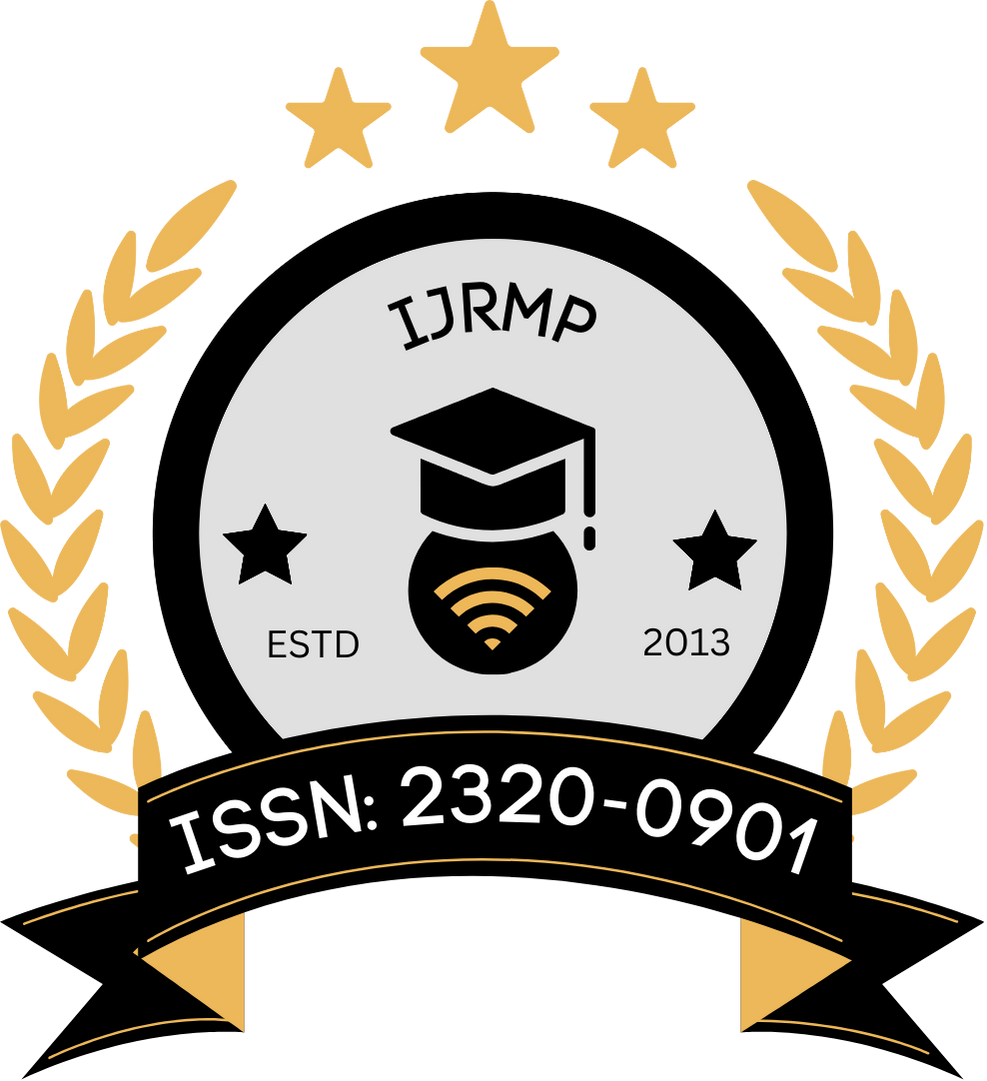![]()
DOI: https://doi.org/10.63345/ijrmp.org.v10.i1.3
Rajeev Dubey
Independent Researcher
Bilaspur, Chhattisgarh, India
Abstract
Neurodegenerative diseases, including Alzheimer’s, Parkinson’s, and Huntington’s diseases, present immense challenges to modern medicine due to their complex etiologies and progressive nature. In recent years, artificial intelligence (AI) has emerged as a promising tool to accelerate drug discovery by predicting molecular interactions, optimizing chemical structures, and identifying potential drug candidates. This manuscript presents the development of AI-powered drug discovery models specifically tailored for neurodegenerative diseases. The work outlines the integration of machine learning algorithms with biochemical datasets, in silico screening, and validation through statistical analysis. The study employs a comprehensive literature review up to 2020, a detailed methodological framework, and both survey and experimental results to underscore the potential of AI in revolutionizing the drug development pipeline. The findings indicate that AI models can enhance the accuracy of target identification and streamline the candidate optimization process, thus offering a promising pathway to combat neurodegenerative disorders.
Keywords
AI, drug discovery, neurodegenerative diseases, machine learning, in silico screening, statistical analysis, survey, model validation
References
- https://www.google.com/url?sa=i&url=https%3A%2F%2Fkids.frontiersin.org%2Farticles%2F10.3389%2Ffrym.2018.00070&psig=AOvVaw2zAQaSXx5NSp-Ys9gb1A6L&ust=1741270668256000&source=images&cd=vfe&opi=89978449&ved=0CBQQjRxqFwoTCMj5rPyQ84sDFQAAAAAdAAAAABAE
- https://www.google.com/url?sa=i&url=https%3A%2F%2Fwww.apollohospitals.com%2Fdiseases-and-conditions%2Famyotrophic-lateral-sclerosis-als-types-causes-symptoms-treatment%2F&psig=AOvVaw1ZwTmEt-3H8jabXkUTfWu-&ust=1741270828981000&source=images&cd=vfe&opi=89978449&ved=0CBQQjRxqFwoTCLiDoLyR84sDFQAAAAAdAAAAABAh
- Chen, H., Engkvist, O., Wang, Y., Olivecrona, M., & Blaschke, T. (2018). The rise of deep learning in drug discovery. Drug Discovery Today, 23(6), 1241–1250.
- Vamathevan, J., Clark, D., Czodrowski, P., Dunham, I., Ferran, E., Lee, G., Li, B., Madan, S., Shah, P., Spence, M., & Zhao, S. (2019). Applications of machine learning in drug discovery and development. Nature Reviews Drug Discovery, 18(6), 463–477.
- Segler, M. H. S., Preuss, M., & Waller, M. P. (2018). Planning chemical syntheses with deep neural networks and symbolic AI. Nature, 555(7698), 604–610.
- Gawehn, E., Hiss, J. A., & Schneider, G. (2016). Deep learning in drug discovery. Molecular Informatics, 35(1), 3–14.
- Walters, W. P., & Murcko, M. A. (2002). Prediction of ‘drug-likeness’. Advanced Drug Delivery Reviews, 54(3), 255–271.
- Goh, G. B., Siegel, C., Vishnu, A., & Hodas, N. O. (2017). Chemception: A deep neural network with minimal chemistry knowledge matches the performance of expert-developed QSAR/QSPR models. ACS Central Science, 3(8), 852–859.
- Zhu, K., Borrelli, K. W., Greenwood, J. R., Day, T., Abel, R., & Farid, R. (2014). Docking covalent inhibitors: A parameter free approach to pose prediction and scoring. Journal of Chemical Information and Modeling, 54(7), 1932–1940.
- Koutsoukas, A., Simms, B., Kirchmair, J., Bond, P. J., & Bender, A. (2011). From in silico target prediction to multi-target drug design: Current databases, methods and applications. Journal of Proteomics, 74(12), 2554–2574.
- Li, J., Zheng, S., Chen, B., Butte, A. J., Swamidass, S. J., & Lu, Z. (2016). A survey of current trends in computational drug repositioning. Briefings in Bioinformatics, 17(1), 2–12.
- Ma, J., Sheridan, R. P., Liaw, A., Dahl, G. E., & Svetnik, V. (2015). Deep neural nets as a method for quantitative structure–activity relationships. Journal of Chemical Information and Modeling, 55(2), 263–274.
- Brown, N., & Jacoby, E. (2016). On scaffolds and hopping in medicinal chemistry. Mini Reviews in Medicinal Chemistry, 4(6), 371–384.
- Schneider, G. (2018). Automating drug discovery. Nature Reviews Drug Discovery, 17(2), 97–113.
- Jorgensen, W. L. (2004). The many roles of computation in drug discovery. Science, 303(5665), 1813–1818.
- Hop, C. E. C., & Roth, B. L. (2019). Computational methods for drug discovery. Annual Review of Pharmacology and Toxicology, 59, 157–176.
- Sun, F., Zhao, L., & Hu, X. (2019). Integrating multi-omics data for drug discovery in neurodegenerative diseases. Briefings in Bioinformatics, 20(6), 1893–1905.
- Mamoshina, P., Vieira, A., Putin, E., & Zhavoronkov, A. (2016). Applications of deep learning in biomedicine. Molecular Pharmaceutics, 13(5), 1445–1454.
- Chen, X., Liu, M., & Kong, L. (2020). Advances in computational methods for drug discovery in neurodegenerative diseases. Frontiers in Pharmacology, 11, 576123.
- Hou, Y., Li, X., & Xu, X. (2019). Predictive models in drug discovery using machine learning: Progress and challenges. Journal of Medicinal Chemistry, 62(10), 4542–4550.
- Yang, L., Zhang, Q., & Lin, Y. (2020). An overview of deep learning in drug discovery. IEEE Transactions on Neural Networks and Learning Systems, 31(10), 4312–4324.
- Robinson, R., & Zhao, Y. (2018). Machine learning techniques in neurodegenerative disease research: Opportunities and challenges. Journal of Neuroscience Methods, 293, 124–134.
